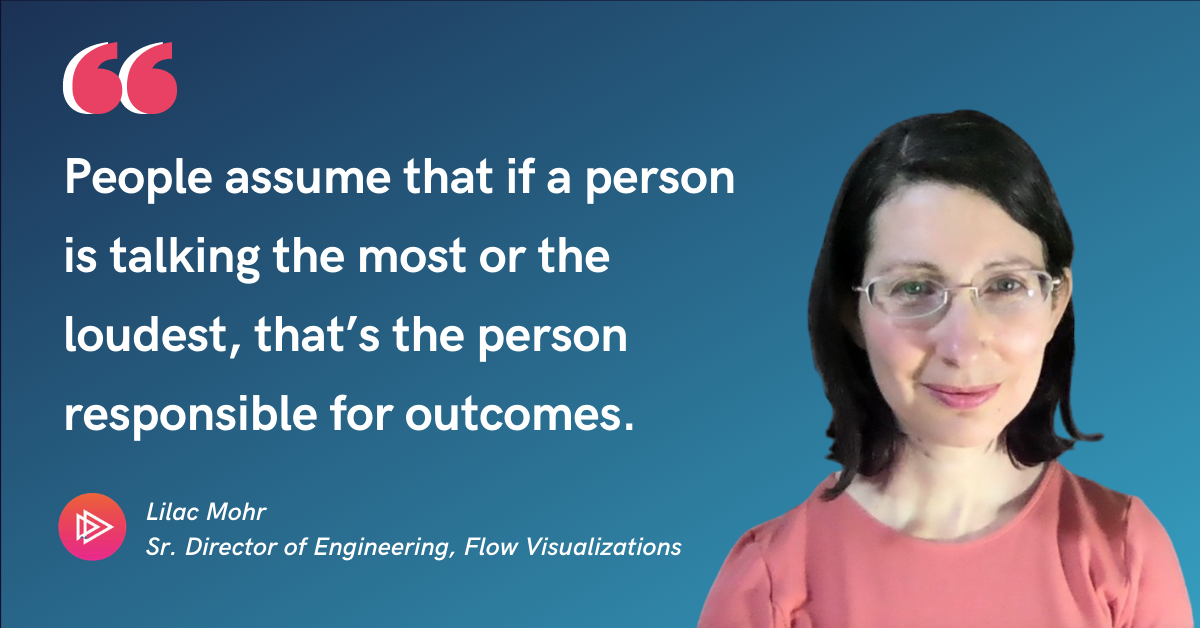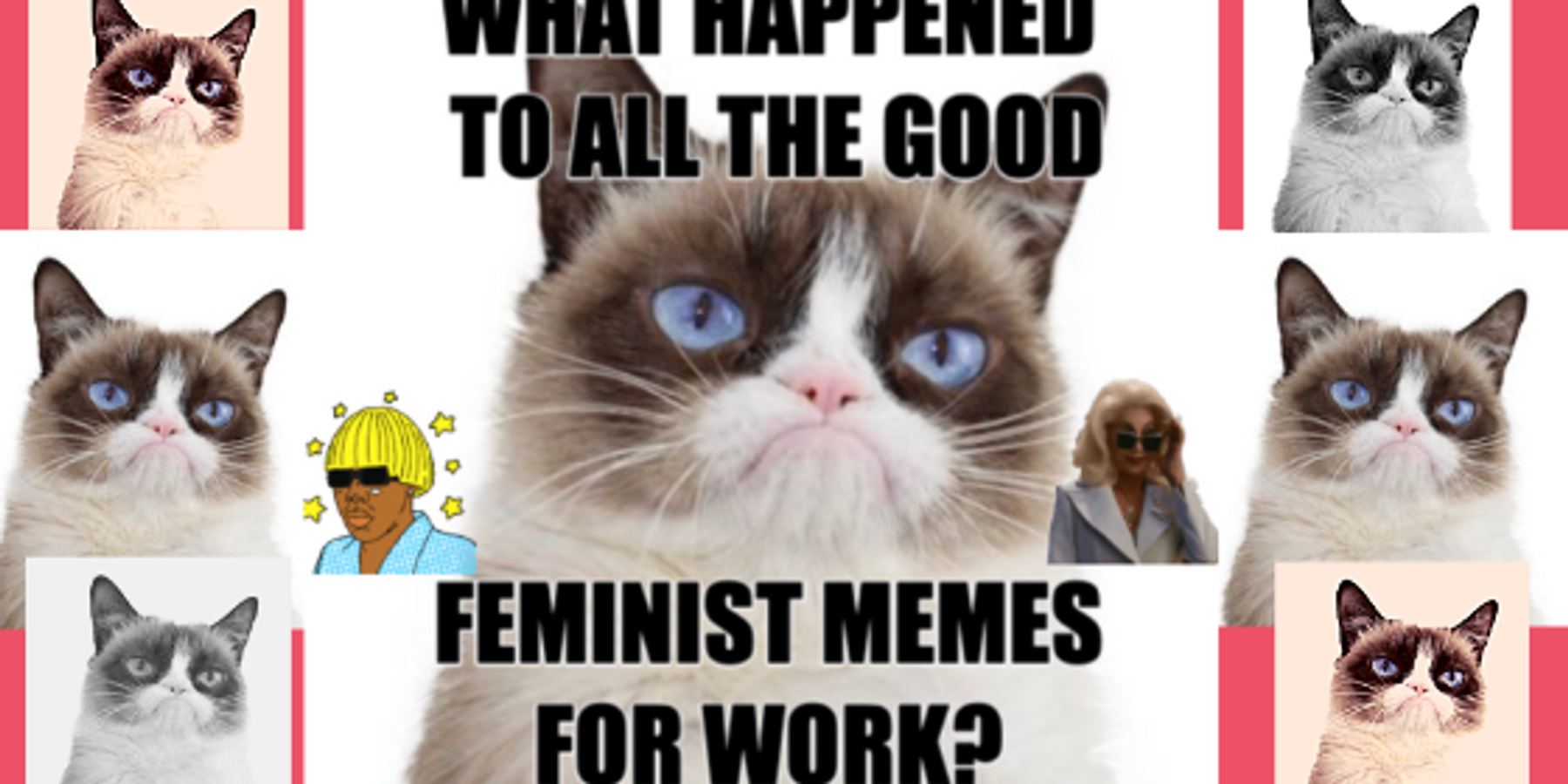Imagine your typical high-performing engineer.
Are they eager to talk about their accomplishments?
Are they full of opinions and comfortable making them known?
Are they male?
Over the course of her 25-year career, Lilac Mohr has never identified with any of those typical characteristics. Yet now, as the Senior Director of Flow Visualizations at technology skills platform Pluralsight, she's a successful engineering leader—and one who is rewriting the way that success in engineering is measured, paving a path for more women and underrepresented minorities to find fulfilling careers.
She remembers reading that some people think of work as a job, others think of it as a career, and others still think of it as a calling. "In my past, I treated it as a career—as a stepping stone to something else. Now, with Pluralsight, it's really a calling," says Lilac. "It's less about me and more about what I can do to make things better for other people, to add value."
We sat down with Lilac to learn more about how she figured that out and what she does to give more people more opportunities to pursue their own careers and callings.
Recognizing allyship and difference
Lilac moved to the U.S. from Israel when she was six. "I had an accent, I was awkwardly shy," she remembers. "One classmate told me that her mother wouldn't let her play with me because I was Jewish."
That moment was Lilac's first experience with the power of allyship, because after that classmate's remark, other girls in Lilac's class stood up for her. "They really took me in, and that simple act of friendship and acceptance meant a lot to me," says Lilac.
Throughout her schooling, Lilac continued to face situations where she was the odd one out, in no small part because of her innate interest in typically male-dominated fields like engineering. She has a master's in statistics and has always been "really excited about analyzing data," she says.
She started her career in software engineering and found it "pretty intimidating."
"I was this young, shy woman in a room full of very opinionated men," she says. "I quickly noticed that it's the loudest voices, usually the male voices, that dominate meetings and get the most attention. People assume that if a person is talking the most or the loudest, that's the person responsible for outcomes." She got used to her male coworkers making off-color jokes in her presence, kept her head down, and did good work.
Lilac later took five years off to homeschool her kids, and when she re-entered the workforce, she worked hard to upskill.
It worked, and she got a job at GitPrime, which was later acquired by Pluralsight. "I know that a lot of women deal with the same situation with gaps in their resume because they take time to be with their families or take care of other obligations. I'd like to also help encourage women," she says of her experience. "When you come back to the workforce, you have a lot of anxiety that maybe you don't belong there. I want to normalize that it's okay to hire people with employment gaps, and that women who join do belong there, that they do have something to contribute."
As a manager at Pluralsight, Lilac continues to be buoyed by allies showing up to do the hard work of confronting biases, even within themselves.
"When I was promoted to a senior leadership role, a team member was concerned that I was too timid for the position," shares Lilac. "When he was discussing this at home with his partner, she asked him to check his biases and he realized that he was making judgements based on my gender and also his preconceived notions of the qualities that a senior leader should have, which is based on his experiences with white males throughout those positions in the past. I'm so glad he shared that story with me; it's just amazing. He had that self-awareness. I think we can all learn how to kind of check our assumptions and make that a habit."
As a leader, Lilac has to remember to check her own assumptions, too. "We need to ask, 'What's the story I'm telling myself about this person and is it real?'" she says.
What meritocracy should look like
A lot of tech companies think they're meritocracies, but few actually are, says Lilac. "It's nice in theory, but in practice, saying you're a meritocracy without training leaders on identifying their biases, without having data-driven performance evaluations, or without giving team members opportunities to demonstrate their accomplishments, you're still putting the pressure on individuals for self-promotion," she says. "The numbers show that those systems, which claim to be meritocracies, really aren't; working women still make up less than a quarter of senior leadership positions in the industry."
Lilac could coach the women who work for her to be better at speaking up for themselves, asking for promotions, and making their achievements visible. But that's not how she approaches fixing the problem. "I don't think that we should put the burden on the women when the decisions at higher levels aren't really equitable," she says.
"Something that we don't acknowledge when we tell women and BIPOC team members to speak up is that there's a lot of stress, like physical, measurable stress, that women and minorities feel when they're put into a climate where they feel like they have to prove themselves against a stereotype," adds Lilac. "It takes time to cultivate psychological safety. It's not enough to just say this is a safe space. You really have to work on it."
Instead, as a manager of other managers, Lilac works to create a more equitable playing field by:
- Ensuring all of her direct reports have weekly one-on-ones with their engineers. "Those one-on-ones are about the individuals, not just the outcomes. It can create a safe space where we can look at those metrics together and discuss accomplishments, ask for feedback, and talk about career growth," she says.
- Shouting out her team's accomplishments in all-hands meetings and on Slack. "We want to shine the light on people who are contributing in all sorts of different ways," says Lilac.
- Supporting community-based groups like ERGs. "I'm always encouraging my team members, 'Hey, go to this Women of Pluralsight group, go to this See Color meeting, learn about Pride at PS, '" says Lilac. "It's so important to connect with others who are going through similar challenges and to also hear the stories of those who are different from you so you can become a better ally."
- Using Pluralsight's own tools—the Flow product—to objectively track performance. "Flow basically makes work visible," explains Lilac. "It reports metrics at three different levels: commit metrics, which give information about the contributions you're making to the code base; review and collaboration metrics, on how you're showing up for other team members by reviewing code that increases quality; and then delivery metrics, which give a big-picture view of the entire process of delivering value to production."
On that last point, using metrics to manage isn't about ranking developers against each other, says Lilac. "It's also not about getting credit for your work as a checklist, like you're checking off all these points and gaming the system so you can get ahead," she adds. "It's really about empowering individuals to have data-driven conversations with our leaders."
Using a product like Flow, engineers don't have to hype themselves up in team meetings or constantly explain what they've accomplished and why it matters. Their managers, along with the rest of their team, can easily and automatically see what they've done in each of those three responsibility areas. And that amount of visibility means that different types of engineers, including and especially the quieter ones, can still find success. "The engineer who's constantly fixing technical debt or the engineer who's giving thoughtful reviews to other people's pull requests or the one who's just being really consistent, they can all shine through the metrics."
Looking to the future
Lilac recognizes that while she's making progress, the tech industry as a whole has a long way to go. "The metrics help, the culture of appreciation helps, and questioning our assumptions about consumption and promotion helps; we're taking little steps in the right direction," she says. "I'd love to come in and say, 'This solved all the problems and we've got a great environment,' but we're still working on it."
To support her goals, Lilac reads a lot on topics of leadership, empowerment, and diversity and inclusion. Here are the books she recommends to PowerToFly readers:
- Whistling Vivaldi: How Stereotypes Affect Us and What We Can Do by Claude M. Steele, "about stereotypes and how they affect us."
- Leading with Gratitude: Eight Leadership Practices for Extraordinary Business Results by Adrian Gostick and Chester Elton, which is how Lilac would describe her leadership style; "It's about acknowledging other people and modeling the behavior that I want to see from the people who work under me."
- Invisible Women: Data Bias in a World Designed for Men by Caroline Criado Perez, about data biases—like how women do more unpaid work than men, which skews data sets on things like average numbers of hours worked during the week.
Interested in working towards a more meritocratic future alongside Lilac at Pluralsight? Learn more about their open roles.




